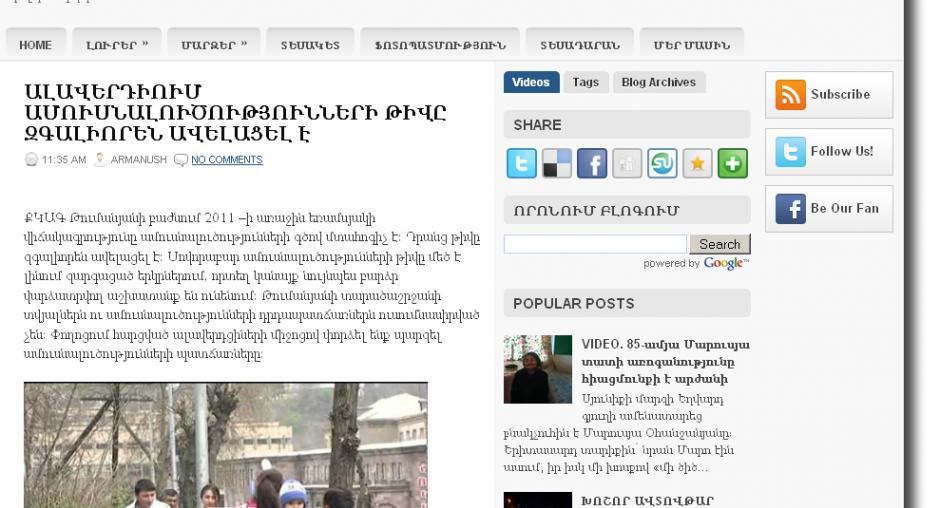OSCE promotes journalistic use of new media in Armenia
Free access to pluralistic and diverse information is essential for the full respect of human dignity, and is a crucial tool to help the public exercise democratic rights and freedoms. In Armenia, where the plurality of views remain largely limited to the Internet, new media platforms can offer opportunities for good journalism that often has no other outlet.
Last year, the OSCE Office in Yerevan launched a media development project that focuses specifically on new media. The project is implemented by “Journalists for the Future”, a non-governmental organization, and is co-funded by the OSCE Office in Yerevan and the Dutch Ministry of Foreign Affairs. The project offers new media training for journalism lecturers from Armenia’s universities, as well as for regional journalists.
Davit Alaverdyan, a journalism lecturer from Yerevan State University and Editor-in-Chief of Mediamax News Agency, highlights one of the problems of information on the Internet: "The major challenge is the fact that there is more ‘opinion’ rather than journalism in the traditional sense. Using social networks provides plenty of information but it is mainly unverified; therefore, accuracy of information in new media forms such as blogging remains a major challenge.”
New media, new voices
A series of workshops, which started in October last year, have guided the participants through the transformation of mass media in the digital environment, the impact of social networks, and opportunities and guidelines for communication on the web.
“There was a time when journalists were magic mediators between politicians, businesses and people. The times have changed now with the advancement of the new media,” said Ivan Zasoursky, Chairman of the New Media Department in Lomonosov University, Moscow, and founder and editor of the online newspaper “Chastniy Korrespondent” (Private Correspondent) following a meeting with journalists after the training session in Yerevan in March. “Social networks currently not only create the news of the day but also prompt media on what they need to focus on. The media therefore should learn how to find their new place and role in this changing environment”.
Entering the blogosphere
“We succeeded in the ice-breaking initiative of conducting training on the use of new media technologies by the journalistic community,” says Suren Deheryan, President of “Journalists for the Future” and Director of the project. “All of the training participants now have their own blogs and most are actively using them.”
As a part of the training activities, an experimental online resource has been created on social networks, which was followed by launching a news resource for covering regional events (http://ditaket.blogspot.com/). With the proper use of alternative media outlets, journalists will have the potential to fill the gaps that may exist in mainstream media reporting.
Vruyr Malkhasyan, a journalist working for “Zangak”, a TV station based in the town of Martuni, who took part in the training said: “These technologies are especially useful for promoting information flow from the capital city to the regions or from region to region”.
A new media course for universities was also developed under the project. This module was elaborated in close consultation with the international experts who delivered the training seminars. New media will be introduced in one of Armenia’s universities as a separate discipline soon and the module will be placed on the Internet for free use by other interested parties.
Written by Tsovinar Arevyan, National Programme Officer, Democratization Programme

